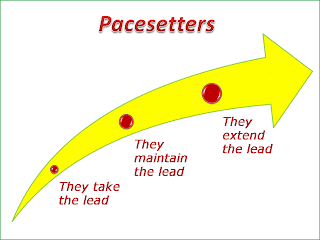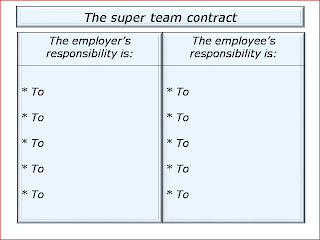
People have always wanted to follow their dreams - and this has often involved pursuing some kind of personal or professional ‘odyssey’. Sometimes the odyssey involves an outer journey, sometimes an inner journey, sometimes a combination of both. Reaching the goal produces a sense of peace. They rest for a while - then embark on another journey.
There are many psychological models for understanding this process - but insights can be also gained from the work of Joseph Campbell. He studied myths and legends from all civilizations. Finding that many followed a similar structure, he called this The Hero’s Journey. Campbell’s work was popularised by Christopher Vogler, author of The Writer’s Journey, and George Lucas, the director of Star Wars. Campbell’s work involves many stages, but let’s explore three overall steps that people take when pursuing their chosen journey.
* Travelling – setting-out on the journey towards the ‘Grail’.
You may be content in your world - but then comes the call to pursue an adventure or tackle a challenge. For example, you may lose your job, get an illness, see an injustice or catch a glimpse of the Holy Grail. At first you refuse the call but, after repeated asking, you embark on the journey. Now you are in a different world and do not know the rules, so you gather information and search for a compass. Looking for guidance, you will meet helpers - but are they friends or enemies? Nevertheless, you continue on your chosen path.
Looking back on your personal and professional life, think of a time when you set-out on a journey. You may have tackled a challenge, combated an illness, searched for a job or whatever. What was the trigger for travelling on the adventure? What was your ‘grail’? Try completing the following sentence.
The personal or professional journey I pursued to achieve a particular ‘grail’ was:
*
* Toiling – working hard on the journey towards the ‘Grail’.
You encounter tests on the journey - toils, trials and tribulations. There are highs, lows, breakthroughs and setbacks, but you try to keep your eyes on the Grail. Christopher Vogler showed how film plots often follow the structure that Joseph Campbell found in myths and legends. He wrote:
“A hero leaves her comfortable, ordinary surroundings to venture into a challenging, unfamiliar world. It may be an outward journey to an actual place: a labyrinth, forest or cave, a strange city or country, a new locale that becomes the arena for her conflict with antagonistic, challenging forces…But there are many stories that take the hero on an inward journey, one of the mind, the heart, the spirit. In any good story the hero grows and changes, making a journey from one way of being to the next: from despair to hope, weakness to strength, folly to wisdom, love to hate, and back again. It’s these emotional journeys that hook an audience and make a story worth watching.”
(The Heroine’s Journey is similar to The Hero’s Journey, but with one vital difference. Women gather knowledge and wisdom from the tribe earlier. Men only ask for help at the last moment - and even then may see it as a sign of ‘weakness’.)
Overcoming challenges, you finally stand on the edge of ‘victory’. You venture into what Campbell calls ‘the inmost cave’ and face the ‘supreme ordeal’. How will you behave in this moment of truth? For example, will you be generous or will you submit to greed? Will you flee, fight or flow?
Let’s return to the journey you followed in your own life and work. Can you recall the trials you faced? How did you overcome the challenges? What support do you get on the journey? Try completing the following sentence.
The specific things I did – and the things I encountered – when pursuing the journey towards the grail were:
*
* Transcending – lifting the ‘Grail’ and gathering wisdom from the journey.
You can only do your best, so you do the right thing. Sometimes you will lift the prize; sometimes you will simply gather wisdom for a future journey. You may enjoy a moment of transcendence - an epiphany - and see the world as if for the first time. The Hero/Heroine sometimes returns with the prize, but first there is the journey home - the return to the ‘ordinary world’. How can you make sense of what you have learned? Will people be able to understand? That is when the wisdom begins to seep into your bones - and you realise that you will be changed forever.
Joseph Campbell says people take one of three routes after returning to the world. a) They share their vision, but the world does not want to know, so they retreat back to the woods, “with a dog and a pipe.” b) They meet resistance, become disheartened, and revert to the ‘world’s way’. c) They make a living by becoming, in the broadest sense, a ‘teacher’ and pass-on their message to people who are receptive.
Looking back on your journey, did you encounter a final test? If so, what was the challenge? How far did you get towards lifting the grail? Did you enjoy a feeling of ‘transcendence’? What lessons did you learn from the journey? How did you re-enter the ‘ordinary’ world? How have you used the learning in your life since the journey? Try completing the following sentence.
The specific things I did to do my best to ‘lift the grail’ were:
*
The lessons that I learned from the journey that I have used in my life since then have been:
*
Days, weeks and months pass. You rest for a while, but then you become restless. There is another mountain to climb, another adventure to pursue. So you embark on your next chosen journey. Or does the journey choose you, Frodo?
Labels: challenge, journey, peak performance





















